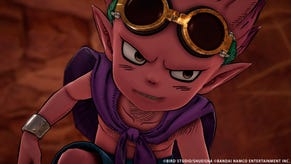Sand Land review – an imperfect, but worthy, final game from one of the best to ever do it
Simplicity is the name of the game here, but you'll still come away happy.
As every Dragon Ball fan will know by this point in time, Akira Toriyama sadly passed away in March of this year. I won't spend too much time eulogising him, many others closer to him have put it much better than I ever could, but it was obviously a monumental loss for the world of anime and manga. And games, too.
There quite literally is no Dragon Quest or Chrono Trigger, amongst so much else that his work inspired within video games, so Sand Land – based on one of his own worlds and stories – finally getting its due in both the form of a film (later released as a series in the west) and as a video game felt more than appropriat. It felt like it was always meant to happen. The final result isn't perfect, granted, but I came away loving it specifically because of how strongly the themes you find in Toriyama's work come through. Before we get ahead of ourselves though, let's set the scene.
Sand Land is a much lesser known manga title from Toriyama's catalogue, originally releasing in the year 2000, only consisting of a single volume following Beelzebub (the prince of all demons), Rao (the aforementioned old man), and Thief (another demon that serves as a guide to Beelzebub). The game and series actually added a fourth member to the crew, Ann, a mysterious young woman and mechanic whose story ventures into spoiler territory. They all reside in Sand Land, a desert area ruined by climate disaster and war, and the main setting for the game which you traverse around as you set off on a quest to find a Legendary Spring so that the country's people have easy access to water again.
It's an enjoyable narrative, too. One that is annoyingly relevant more than two decades later, and one that is held up by its very likeable protagonists that have that effortless Toriyama charm. I can't really tell you all that much about the story – spoilers – but also because if I did I'd be giving too much away. There's nothing overly mind-blowing, the stakes are pretty typical of an RPG, but I never felt bored, and I definitely felt compelled to see it through to the end.
With the whole original point behind Sand Land being that Toriyama wanted to tell a story about a man and tank, comes the obvious assumption that a lot of what you do in the game is driving a tank around - which would be correct! The game actually has several vehicles you can slowly unlock, but the first permanent addition is a tank, which of course has Toriyama's incredible mechanical stylings, realised perfectly by developer ILCA.
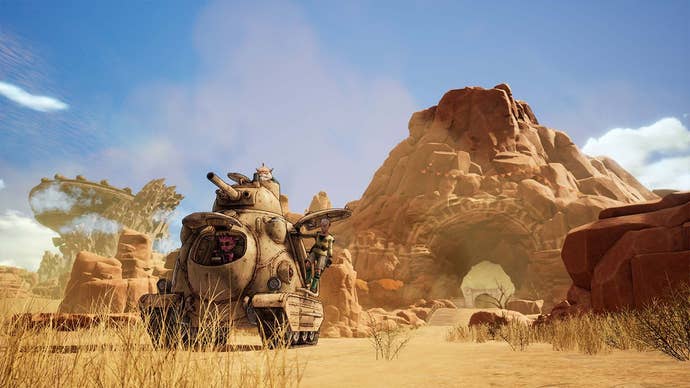
Controls wise, the tank plays pretty much exactly as you'd expect it would. It moves slowly, you have a canon and minigun attachment, and thankfully you never need to worry about ammo, as there's simply a cooldown instead. There are, of course, a range of customisation options for each vehicle too, allowing you to prioritise speed, defence, attack – the usual kind-of stats. It all works quite neatly, allowing you to build a loadout that suits you best, but it's not so in-depth that it might overwhelm you or be too finickity.
You don't spend all of your time traversing Sand Land in a tank, though, as sometimes there is the occasional fight, playing as Beelzebub himself. He handles well enough, with basic combos that you can slowly unlock more of via skill tree, as well as certain abilities that come with the story. Your companions can join in the fray too with their own abilities, though it's mostly just Beelzebub on his own as they stick to the side. It's really nothing fancy. 'Serviceable' is probably the best word, but I never felt frustrated by the combat, so it did its job. After all, the vehicles are meant to be the main part.
The story follows the anime along for the most part – with a few deviations into new areas – but you do obviously get to spend time with the characters in other ways, namely side quests. I think it's here where Beelzebub and co. are quite well-realised, both in terms of their personalities, but also simply their models. Honestly, I'm not sure if I've seen a game based on Toriyama's work that truly feels like it's lifted right from his pages in such a way before - it's a truly beautiful game, with one of the best sunset skyboxes I've seen since Kingdom Hearts 2's Twilight Town.
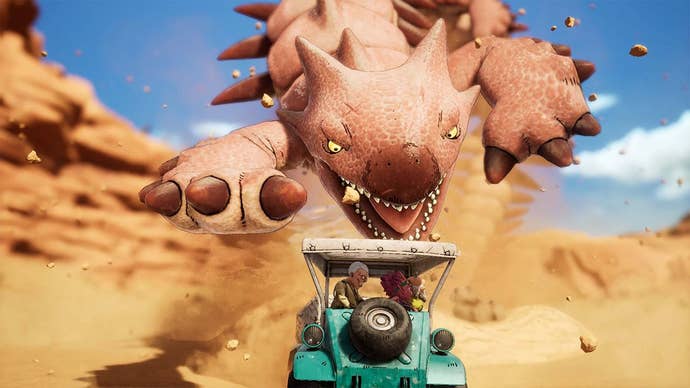
Back to the side quests, though; for the most part, I don't think they were all that good. As mentioned, I do think it characterises the main cast quite well, giving you a chance to hang out with them and see their identities fleshed out, but generally the side quests are either fetch quests or 'beat a bad guy up' quests. They can be funny, sure, and there's even one where a choice that I made literally resulted in the death of a character (yes, that did mess me up a bit), but actually playing them wasn't very interesting.
Sand Land's open world features a main hubtown that you'll frequently come back to in your time with the game, as it's where the garage that Ann fixes up your vehicles resides in. It is also, quite sadly, a ghost town, with the remaining villagers hanging on by a thread. The years of bad weather, and a war that took place three decades prior, left it teetering on the edge of death, with some residents considering leaving because it's doing so badly.
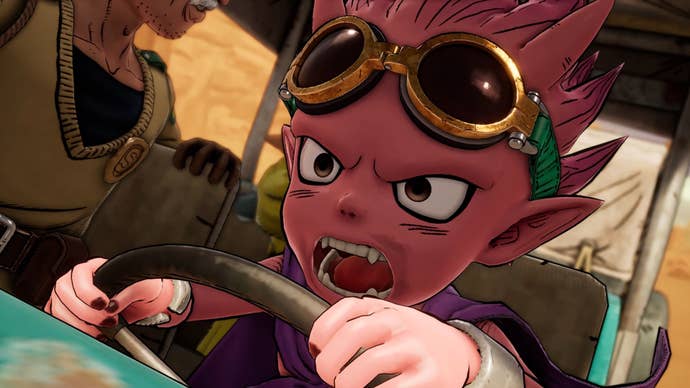
As the game explains to you, though, playing through the main story and, in particular, side quests changes Spino. Over time, where there are heaps of scrap and dilapidated buildings, you instead find shops for things like vehicle parts, or a building where you can customise how your vehicles look. Yes, sure, they're all very much designed around the vehicle aspect of the game, but I still think it taps into something fundamental to Toriyama's work: in the face of insurmountable odds, there's nothing stronger than coming together and facing it head on.
This is obviously a theme you see in Dragon Ball moreso than anything else, with Goku even going so far as to befriending almost every villain he faces off against to fight for a better tomorrow, arc after arc. While Sand Land is more about climate disaster and fascistic, militaristic rule abusing the people of a struggling country, there's some obvious connective tissue there. Toriyama's heart is evident in this.
Having more gameplay options obviously made it worth helping Spino out, but the joy the inhabitants clearly felt that their home was seeing a better tomorrow was enough of a reason to keep doing it anyway. I don't think it's the most revolutionary piece of design, but it does remind me of Breath of the Wild's Tarrey Town, a highlight from that title too.

Ultimately, the game's story is a fun one that does touch on some heavier themes, too. But it's the collective action at Spino that helps it feel special. Sand Land feels like a game that you can't believe wasn't originally released on the PS2. It's the fact that you can so strongly feel Toriyama within the game that that results in it feeling like a wonderful, imperfect send-off for one of the most influential artists ever. It won't knock your socks off, and I doubt it will be part of the game of the year conversations further down the road. But I don't care. I'm just happy to step into an old, but new, Toriyama world once last time.
Sand Land launches on PS5, Xbox Series X/S and PC on April 26.
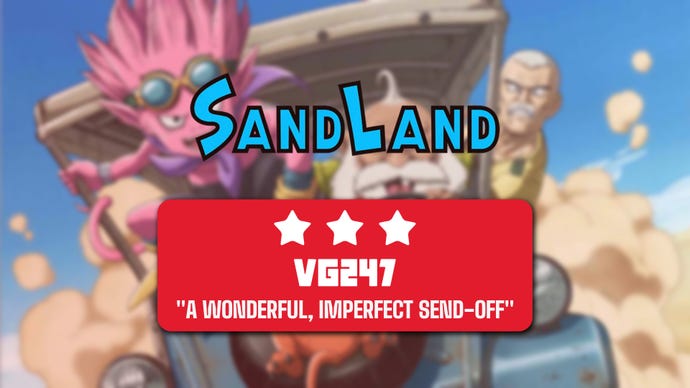
.jpg?width=70&height=70&fit=crop&quality=60&format=png&auto=webp)
